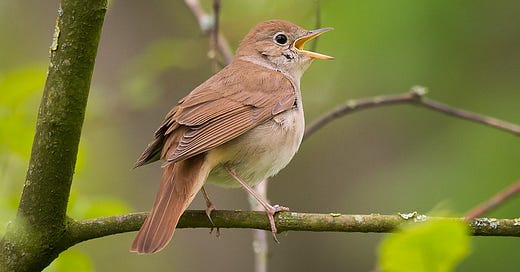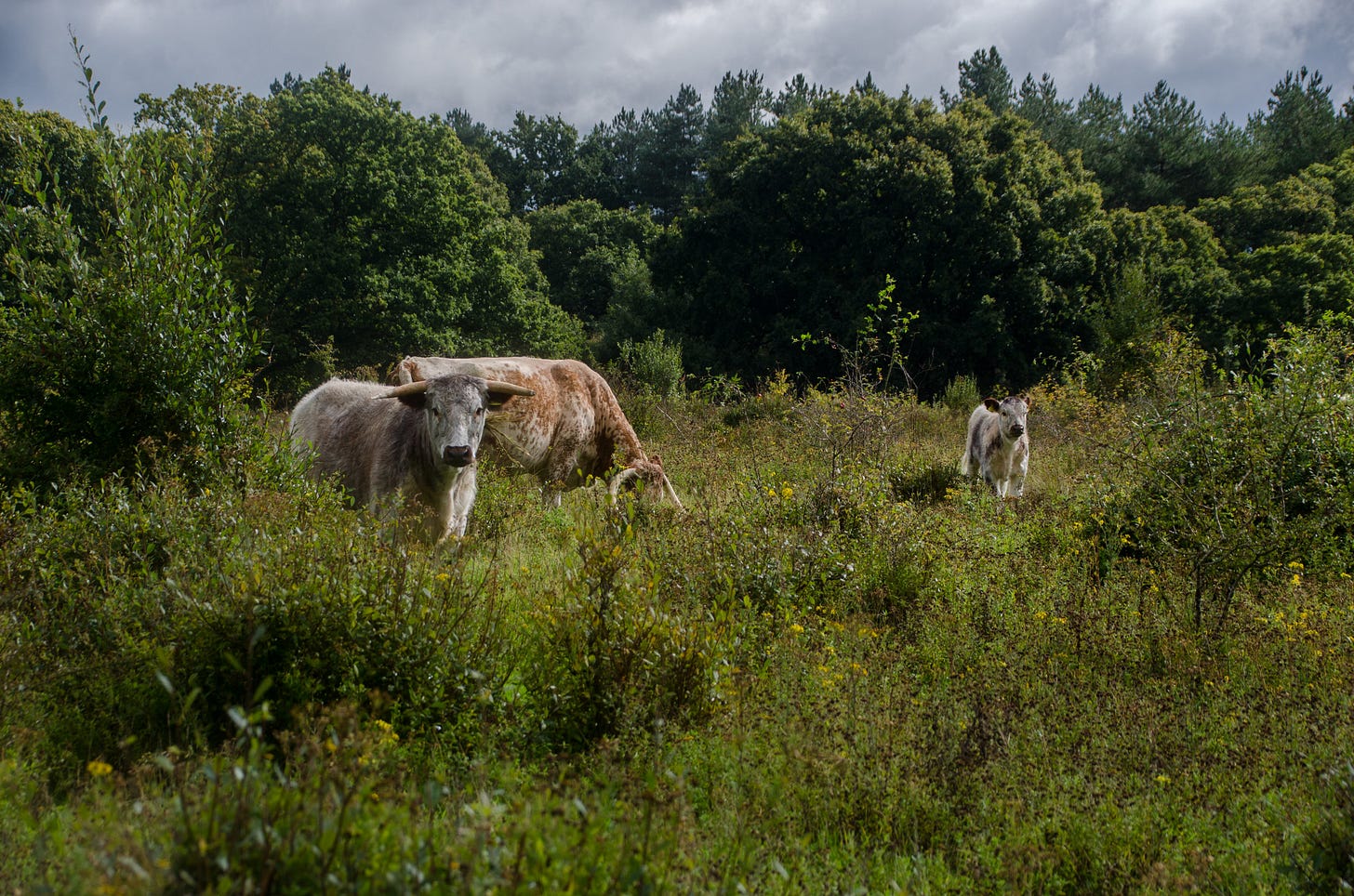Nightingales are celebrated as no other bird for the richness, variety and delivery of their song.
One of few songbirds to sing reliably in the depths of night, as well as in the day, nightingales perform for the briefest of seasons, beginning upon their return from Africa in mid-April and quietening by early June.
While their song is hard to ignore, the sight of one can be hard to come by, with nightingales often tucking themselves away in the densest of thickets.
The song is impossible to describe adequately. Their eclectic inventory of notes and phrases, and the masterful, intuitive way they string them together, is quite unlike any other British bird. They wouldn’t sound out of place in a jungle.
Nightingales do trills that make time stand still; weird and rapid oscillations; delicate liquid interjections; a series of whistles that starts modestly and builds to a dramatic and abrupt finale; a penetrating ‘jug-jug-jug-jug’ phrase which can carry a long way on a warm, still night; and among all of these, exquisitely-judged pauses.
Nightingales are on the edge of their range in Britain, and their distribution is shrinking, now mainly restricted to the south-east of a line between the Wash in Lincolnshire and the Severn.
In Britain, they are sometimes associated with ancient woodland and supposedly unspoilt places, but their relationship to the land is not so simple.
Around the Mediterranean, where they are much more common, nightingales spend the summer in a host of scrubby habitats - and it is that dense scrub that is important to them here too, not tall temperate trees.
So in open English woodland, with coppiced glades or with understorey unmunched by too many deer, there can be nightingales. But they are also drawn to more open places with chaotic emerging vegetation, as found at the edge of flooded gravel pits and in tangled corners along river valleys.
One of the most successful recent recoveries in nightingale numbers has been on the Knepp Estate in West Sussex.
There the former arable fields and pasture are bubbling with new growth, and the old hedgerows are billowing out to make wide, hollow-hearted fortresses in thorn; dreamy conditions for a nightingale.
The window to catch them in song is brief. You would be forgiven for thinking they had gone by mid-June, but they are merely low-key from that point. You may hear a frog-like croaking as they feed among the undergrowth, though you will be lucky to see one.
Nightingales migrate south in August and early September, unheard and unseen, but lingering in the memory.
> Find out where to hear a nightingale this Spring (Countryfile magazine)
The first run of the British Birdsong 101 course is almost complete. I’m taking expressions of interest for a second cohort to join from late April to June - let me know if you would like to know more.
You can join me ‘Up With The Birds’ for a free early morning listen to the nightingales (and other woodland species) via Zoom, on Saturday 24 April. Tickets here.
Media credits:
Nightingale recording by Lawrence Shrove, courtesy of the British Library.
Nightingale image by Flickr user Rob Zweers, reproduced under Creative Commons licence CC BY-ND 2.0
Knepp image copyright Knepp Wildland




